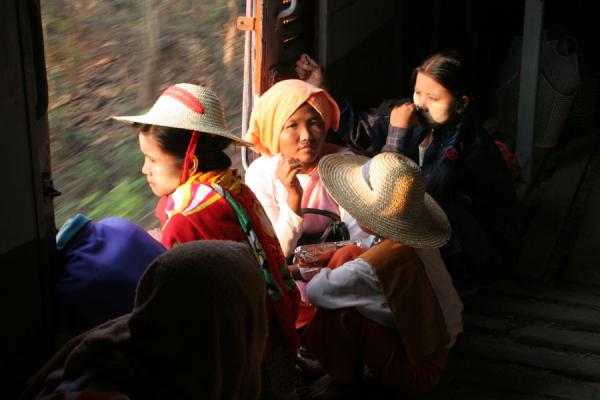
Burmese Women. Photo credit: Google Images
By Peter Hotez, M.D., Ph.D.
Allied troops fighting in Burma during World War II brought home horror stories – and lifelong infections – of the tropical diseases endemic to Southeast Asia. More than 60 years later, Burma continues to be severely affected by malaria as well as some of the most devastating neglected tropical diseases (NTDs) found anywhere in the world. Following decades of harsh military rule, it is no coincidence that Burma is also one of the few remaining deeply impoverished countries in Southeast Asia, with a human development index on par with Haiti and many sub-Saharan African countries. Controlling and eliminating the country’s diseases of poverty hold the key to cultivating a healthier, and more empowered, citizenry in Burma.
As part of the United States’ overall effort to bridge the half-century political divide between our two nations, Secretary of State Hillary Clinton’s current’s visit to Burma is a great opportunity to prioritize extremely low cost medical treatments that will help Burma’s population overcome chronic parasitic infections and the barriers to prosperity that these diseases present.
Although access to the country is limited, based on recent health evaluations of refugees fleeing into Thailand we know that many people in Burma suffer severely from intestinal worm infections, elephantiasis, dengue, typhus and other NTDs. Girls and pregnant women are disproportionately affected. Reports last year from the Public Library of Science (PLoS) indicate that malaria and NTDs are the leading causes of fever in pregnant women on the Thai-Burmese border, while hookworm, found in half of the women who are pregnant, is a major cause of low birth-weight among newborns.
Although not as well known as HIV/AIDS or other infections, according to our evidence, NTDs represent the most common infections of poor people living in Southeast Asia. Moreover, these conditions are stealth causes of poverty in the region, with severe impact on child growth, cognitive development, pregnancy outcome, and worker productivity.
The good news is that many of the most common NTDs, including some of the intestinal worm infections and elephantiasis, can be controlled or even eliminated through extremely low-cost mass treatment approaches. Three of the drugs for this purpose are being donated free-of-charge by GlaxoSmithKline, Johnson & Johnson, and Eisai, while Novartis is donating anti-leprosy drugs. Partial support to administer these drugs has been provided by the non-profit Global Network for Neglected Tropical Diseases, but Secretary Clinton can greatly expand control and elimination efforts in Burma through USAID’s ongoing Neglected Tropical Disease Program.
In particular, the eastern frontier of Burma most affected by these tropical infections has also been the area most neglected by the military regime. This region on the Thai border is inhabited by ethnic minority groups that have been engaged in a 40-year conflict with the government. A humanitarian crisis has ensued and there is grossly inadequate access to essential medicines for NTDs, especially for females—causing NTDs to indirectly become a bioweapon of oppression.
By promoting NTD control and elimination, Secretary Clinton can offer an affordable solution to one of the most important health and poverty issues affecting girls and women in Burma. Simultaneously, she would also be addressing one of the nation’s most pressing human rights issues. This is a great opportunity to showcase the U.S. contribution to disease control and poverty reduction.
Peter Hotez MD PhD is President of the Sabin Vaccine Institute and Texas Children’s Hospital Center for Vaccine Development and Dean of the National School of Tropical Medicine at Baylor College of Medicine
